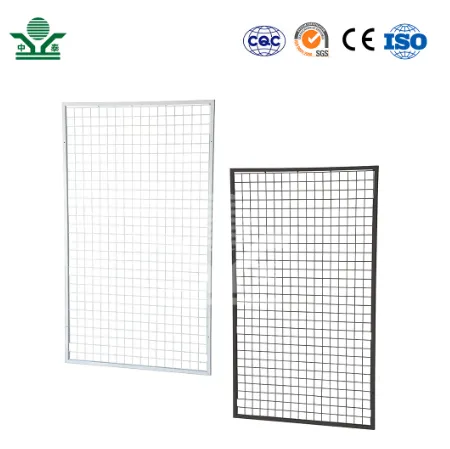Making a Climbing Net A Step-by-Step Guide
Climbing is an exhilarating activity that challenges both the body and the mind. Whether you're an avid rock climber or just looking for a fun outdoor activity, creating your very own climbing net can add a thrilling dimension to your climbing experience. A climbing net not only offers a unique way to practice climbing skills but also serves as a safety feature during training exercises. In this article, we will explore the steps and considerations involved in making a climbing net.
Materials Needed
Before diving into the construction of your climbing net, it's crucial to gather the appropriate materials. Here’s a list of what you will need
1. Climbing Rope This will serve as the main body of your net. Choose a high-quality, durable rope that is designed to withstand weight and abrasion. 2. Carabiners These are essential for attaching the net to anchors or points of stability. Make sure to select locking carabiners for added security. 3. Mesh or Netting Material In addition to rope, you might consider using heavy-duty mesh fabric if you're building a net with a wider surface area. 4. Rope Cutter To cut the climbing rope to the desired lengths. 5. Measuring Tape To measure lengths accurately. 6. Sealing Tape (Optional) To reinforce knots or connections if needed. 7. Gloves To protect your hands during the construction process.
Step 1 Planning Your Design
The first step in creating a climbing net is to plan your design. Consider where you’ll be using the net—whether it’s for a backyard obstacle course, a climbing gym, or for outdoor adventures. Your design will depend on the intended use, the available space, and the climbing abilities of the users.
For a basic design, aim for a rectangular or square shape, which can be easily constructed. Measure the space where the net will be installed and decide how large you want it to be.
Step 2 Cutting the Rope
Once you have your design ready, it’s time to cut the climbing rope. Using your measuring tape, determine the lengths needed for the vertical and horizontal components of the net. It's typically a good idea to cut extra rope lengths to account for knots and connections.
Be sure to use a rope cutter to make clean cuts. This will help prevent fraying, which can weaken the strength of the net.
making a climbing net

Step 3 Knot Tying
Knot tying is a fundamental aspect of constructing a climbing net. The most effective knots for this purpose include the square knot, double figure-eight knot, and clove hitch. Depending on your design, you’ll need to tie knots at each intersection where the rope crosses.
Take your time with this step, as the integrity of your climbing net relies heavily on the strength of your knots. A poorly tied knot can compromise the safety of the net.
Step 4 Creating the Net Structure
Once you have all your lengths cut and knots tied, you can begin assembling the net. Start by creating the horizontal sections of the net, then add the vertical pieces. Make sure the mesh is tight and evenly distributed.
If you’re using additional mesh material, you can sew or secure it into place around the rope structure for added stability and surface area.
Step 5 Installation
After your net is constructed, it's time to install it. Find sturdy anchor points such as trees, posts, or walls that can bear the weight of the climbing net. Use locking carabiners to attach the net securely to these anchors.
Always double-check the stability of the installation before use. Additionally, it’s advisable to test the net with some weight—perhaps a light individual or some weights—to ensure it holds up before attempting more serious climbing.
Conclusion
Creating your own climbing net can be a rewarding experience that enhances your climbing practice. With the right materials, careful planning, and attention to safety, you can have a functional and fun climbing net ready for adventure. Always prioritize safety and ensure proper supervision when using the net, particularly for younger climbers. Enjoy the process of building, and get ready to elevate your climbing game!
-
Turn Down the Noise: The Future of Highway Sound Barriers
NewsApr.09,2025
-
Silence the Sound: The Power of Highway Noise Barriers
NewsApr.09,2025
-
Reduce Road Noise Effectively with Highway Noise Barriers
NewsApr.09,2025
-
Noise-Free Living: How Highway Barriers Make a Difference
NewsApr.09,2025
-
Engineered for Silence: Highway Noise Barriers for Every Road
NewsApr.09,2025
-
Effective Noise Control: Highway Barriers for a Quieter Tomorrow
NewsApr.09,2025
Subscribe now!
Stay up to date with the latest on Fry Steeland industry news.

